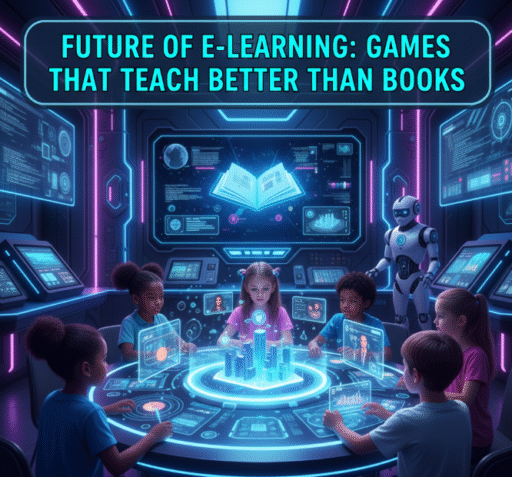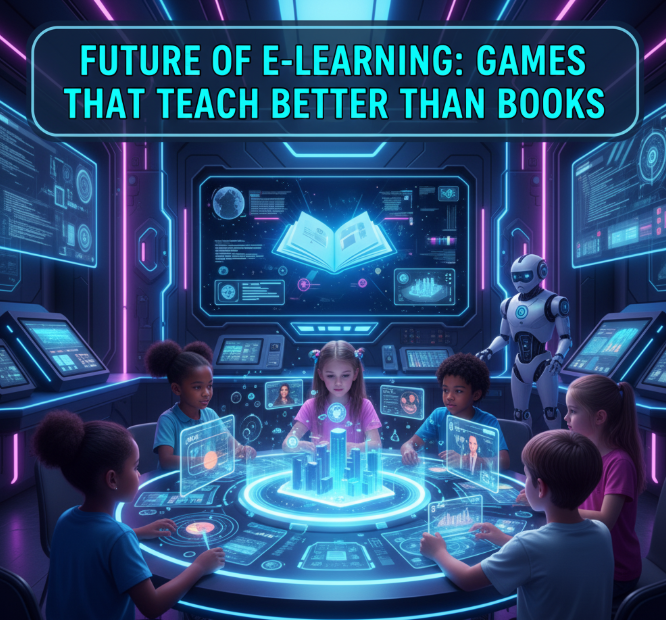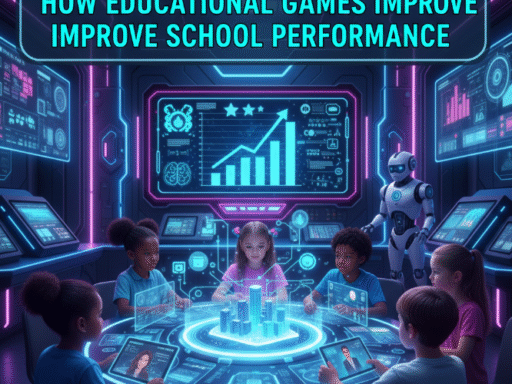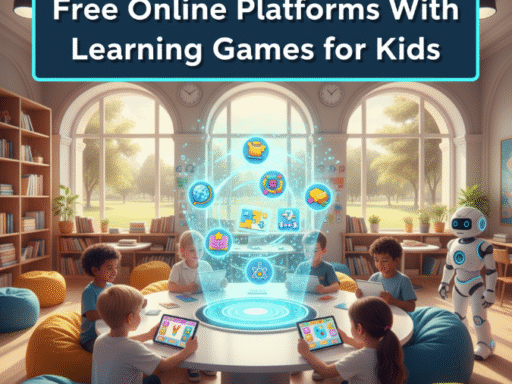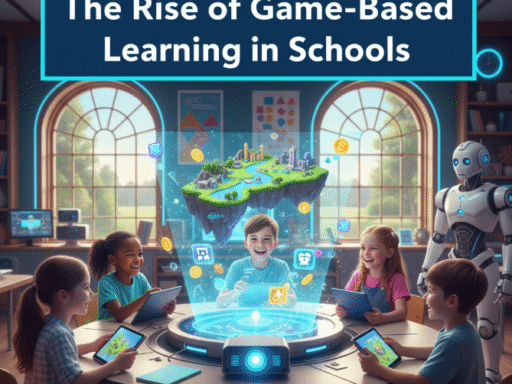Introduction: A New Era of Learning
For centuries, books have been the backbone of education. They provided knowledge, wisdom, and skills that shaped civilizations. But in today’s fast-paced digital world, the way we learn is changing. Students are no longer limited to reading text or memorizing facts. Instead, they can interact with knowledge through games that make learning fun, engaging, and effective.
This shift is not just a trend—it’s the future of e-learning. Research shows that when learners are actively involved in problem-solving and decision-making (as they are in games), they understand and remember information far better than when passively reading. From math and science to history and language, games are proving that they can sometimes teach better than traditional books.
In this article, we’ll dive deep into how educational games are transforming learning, why they are often more effective than textbooks, and what the future of e-learning might look like in the coming decades.
Why Games Are More Effective Than Books in Learning
Books have been trusted for centuries, but they rely on passive learning—students read, highlight, and memorize. Games, on the other hand, involve active learning. Let’s break this down:
Key Advantages of Learning Through Games
-
Engagement and Motivation
-
Games turn boring lessons into challenges and adventures.
-
Students get rewards, points, and feedback, keeping them motivated to continue learning.
-
-
Active Participation
-
Instead of just reading about a concept, students experience it.
-
For example, a history game might let you step into the shoes of a medieval king, making decisions that affect your kingdom.
-
-
Instant Feedback
-
In books, students often wait until exams to know if they understood correctly.
-
Games give real-time feedback, allowing learners to adjust and learn faster.
-
-
Better Memory Retention
-
Studies show that learners retain up to 80% of information learned through practice and play, compared to 10–20% through reading.
-
-
Personalized Learning
-
Games adapt to each student’s pace. Struggling with a math problem? The game adjusts the difficulty level instead of moving on.
-
From Blackboards to Gameboards: The Evolution of Learning Tools
To understand the future, let’s take a quick look at how learning tools have evolved:
| Era | Main Learning Tool | Features | Limitations |
|---|---|---|---|
| Ancient Times | Oral Teaching | Stories, memorization | Limited reach, no written record |
| Middle Ages | Books & Manuscripts | Access to structured knowledge | Expensive, not widely available |
| 20th Century | Textbooks & Chalk | Standardized education in schools | Passive learning, memorization |
| 21st Century | E-Learning & Games | Interactive, engaging, tech-driven | Requires devices and internet |
The table clearly shows how each era moved closer to interactive and accessible learning methods, with games now taking the lead.
Types of Educational Games Shaping the Future
Not all games are the same. Some are designed for fun, while others are built to teach and train. Below are the major categories of games that are changing e-learning:
1. Simulation Games
-
Example: Flight simulators, medical surgery games.
-
How they help: Allow learners to practice real-world tasks in a safe, risk-free environment.
2. Puzzle and Problem-Solving Games
-
Example: Sudoku, logic puzzles, escape-room style games.
-
How they help: Improve critical thinking, reasoning, and creativity.
3. Role-Playing Games (RPGs)
-
Example: History-based adventures, business strategy games.
-
How they help: Teach decision-making, teamwork, and leadership.
4. Language Learning Games
-
Example: Duolingo, Wordscapes.
-
How they help: Make language learning fun with repetition, visuals, and rewards.
5. Multiplayer and Collaboration Games
-
Example: Minecraft: Education Edition.
-
How they help: Encourage teamwork, communication, and collaboration skills.
Games vs Books: Which One Wins?
Let’s directly compare the strengths of books and games:
| Feature | Books | Games |
|---|---|---|
| Engagement | Requires self-discipline | Highly engaging with rewards system |
| Interactivity | Low | High – learners interact constantly |
| Retention | Moderate | Very high (experience-based) |
| Accessibility | Easy, low-cost | Requires devices & internet |
| Adaptability | Same for everyone | Personalized learning experience |
| Feedback | Delayed | Instant |
👉 Books will always remain valuable for deep study, but games provide an active, memorable, and personalized learning experience.
Real-World Examples of Games That Teach Better
Here are some outstanding examples where games are already proving more effective than traditional methods:
-
Minecraft: Education Edition
-
Used in schools to teach architecture, coding, and environmental science.
-
Students design virtual cities, run experiments, and solve environmental challenges.
-
-
Kahoot!
-
A classroom quiz game that makes revision fun and competitive.
-
Teachers report higher participation rates compared to reading sessions.
-
-
SimCityEDU
-
Helps students understand urban planning, pollution control, and resource management.
-
Learners “see” the results of their decisions, unlike in a textbook.
-
-
Duolingo
-
Makes learning languages like Spanish, French, and German feel like playing a mobile game.
-
More engaging than reading grammar rules from a textbook.
-
-
DragonBox
-
A math game that teaches algebra through puzzles.
-
Students who dislike math often enjoy solving equations in game form.
-
How Games Improve Different Subjects
Math
-
Games like Prodigy make solving equations exciting with battles and challenges.
-
Students improve faster compared to just practicing problems from a book.
Science
-
Virtual lab games allow learners to conduct chemistry experiments safely.
-
Physics games simulate gravity, motion, and energy concepts interactively.
History
-
Strategy games put learners in historical situations (like managing an empire).
-
Students “live” history instead of memorizing dates.
Languages
-
Repetition through mini-games and storytelling keeps learners engaged.
-
Builds vocabulary and grammar skills without boring drills.
Benefits Beyond Academics
Educational games don’t just improve subject knowledge. They also build life skills:
-
Problem-solving ability
-
Creativity and innovation
-
Collaboration and teamwork
-
Time management
-
Digital literacy
In short, games prepare students not only for exams but also for real-world challenges.
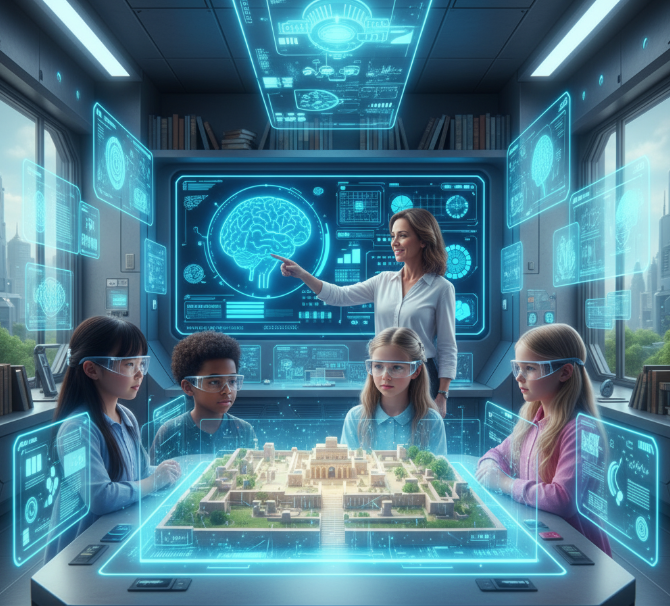
The Future of E-Learning: What’s Coming Next
The next 10–20 years will see incredible transformations in how we use games for learning. Here are some predictions:
1. Virtual Reality (VR) Classrooms
-
Students will step inside a Roman Colosseum or explore the human body in 3D.
-
VR headsets will make learning more immersive than ever.
2. Augmented Reality (AR) in Everyday Lessons
-
Imagine pointing your phone at a textbook picture and seeing it come alive.
-
AR will connect physical books with interactive digital content.
3. Artificial Intelligence in Games
-
Games will adapt to each student’s weaknesses and strengths in real time.
-
AI tutors will guide learners personally, like a teacher sitting beside them.
4. Gamified Assessments
-
Exams might look like adventure quests where students show knowledge by completing challenges.
5. Global Multiplayer Learning
-
Students from different countries will team up in online learning games, breaking cultural and language barriers.
Challenges of Replacing Books with Games
Of course, games aren’t perfect. There are challenges that need solving:
-
Screen Time Issues: Too much gaming may lead to health problems.
-
Access Inequality: Not all students can afford devices or internet.
-
Quality Control: Not every “educational” game is truly effective.
-
Teacher Training: Educators need training to use games properly in classrooms.
Solutions include balancing screen time, creating affordable learning platforms, and government support for digital learning access.
Tips for Parents and Teachers to Use Games Wisely
-
Choose age-appropriate educational games.
-
Set daily time limits to balance screen use.
-
Mix books and games for the best learning results.
-
Track progress with in-game analytics and reports.
-
Encourage collaboration through multiplayer games.
Infographic: Books vs Games in Learning
Here’s a quick infographic-style summary (text-based for now):
Retention Rate:
-
Reading → 20%
-
Hearing → 30%
-
Doing/Playing → 80%
Conclusion: A Balanced Future
Books will never fully disappear—they remain powerful sources of detailed knowledge. But as technology evolves, games will play a bigger role in classrooms, homes, and workplaces. They combine fun with education, turning learners into active participants instead of passive readers.
The future of e-learning lies in a balanced approach: using books for depth and understanding, and games for engagement, practice, and real-world application. When combined, they create a learning system that truly prepares students for the challenges of tomorrow.
So, the next time you see a child playing a learning game, remember—they might just be learning more effectively than by reading a book.
